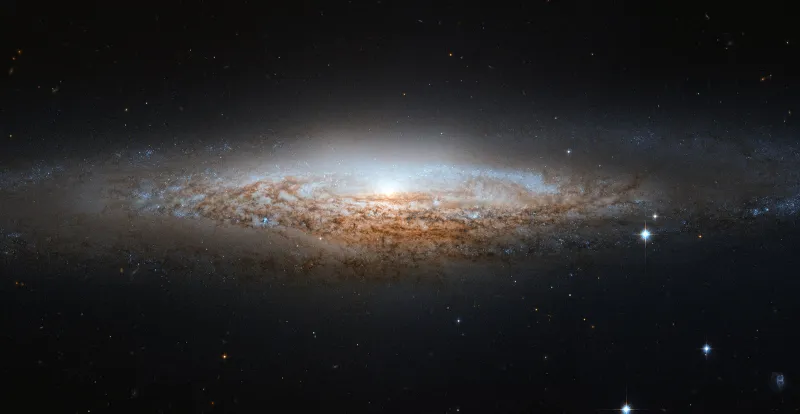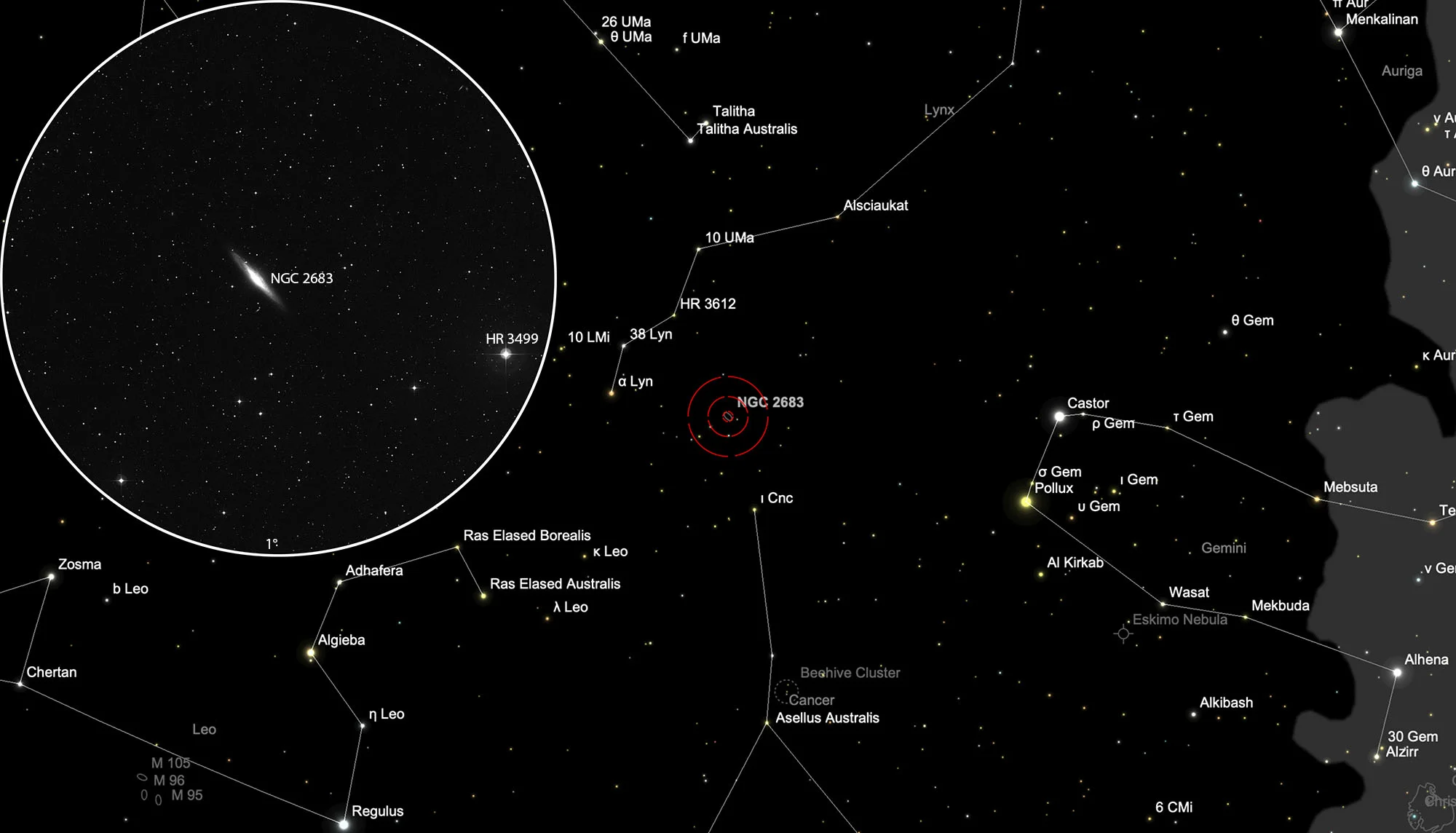UFO Galaxy (NGC 2683)

History
The galaxy was discovered by William Herschel on 5 February 1788 using his selfmade 18.7 inch reflecting telescope. He cataloged it as I 200 and described it as follows: «Very brilliant, much elongated, south preceding north following, 8' long 3' broad beautiful.» [464] John L. E. Dreyer cataloged the galaxy then as NGC 2683 in his «New General Catalogue» of 1888. [313]
The galaxy got the nickname «UFO Galaxy» due to its resemblance of a flying saucer.
Physical Properties
NGC 2683 is galaxy seen almost edge-on. Spectroscopic and photometric observations have shown, that it has a central bar which is 6° away from the galaxy's major axis. One can see the delicate dusty lanes of the spiral arms silhouetted against the galaxy's core. Brilliant clusters of young blue stars shine scattered throughout the disc, mapping the galaxy’s star-forming regions. [517, 518] Measured distances are ranging from 7.5 Mpc to 12.4 Mpc (24 to 40 million light years). [145]

| Designation | NGC 2683 |
| Type | Gx (Sb) |
| Right Ascension (J2000.0) | 08h 52m 41.3s |
| Declination (J2000.0) | +33° 25' 12" |
| Diameter | 9.3 × 2.1 arcmin |
| Photographic (blue) magnitude | 10.6 mag |
| Visual magnitude | 9.8 mag |
| Surface brightness | 12.9 mag·arcmin-2 |
| Position Angle | 44° |
| Redshift (z) | 0.001371 |
| Distance derived from z | 5.79 Mpc |
| Metric Distance | 10.180 Mpc |
| Dreyer Description | vB, vL, vmE 39°, gmbM |
| Identification, Remarks | WH I 200; h 532; GC 1713; UGC 4641; MCG 6-20-11; CGCG 180-17; KUG 0849+336 |
Finder Chart
The Galaxy NGC 2683 can be found in constellation Lynx. The best observation time is October to July, when it is highest in the night sky.
